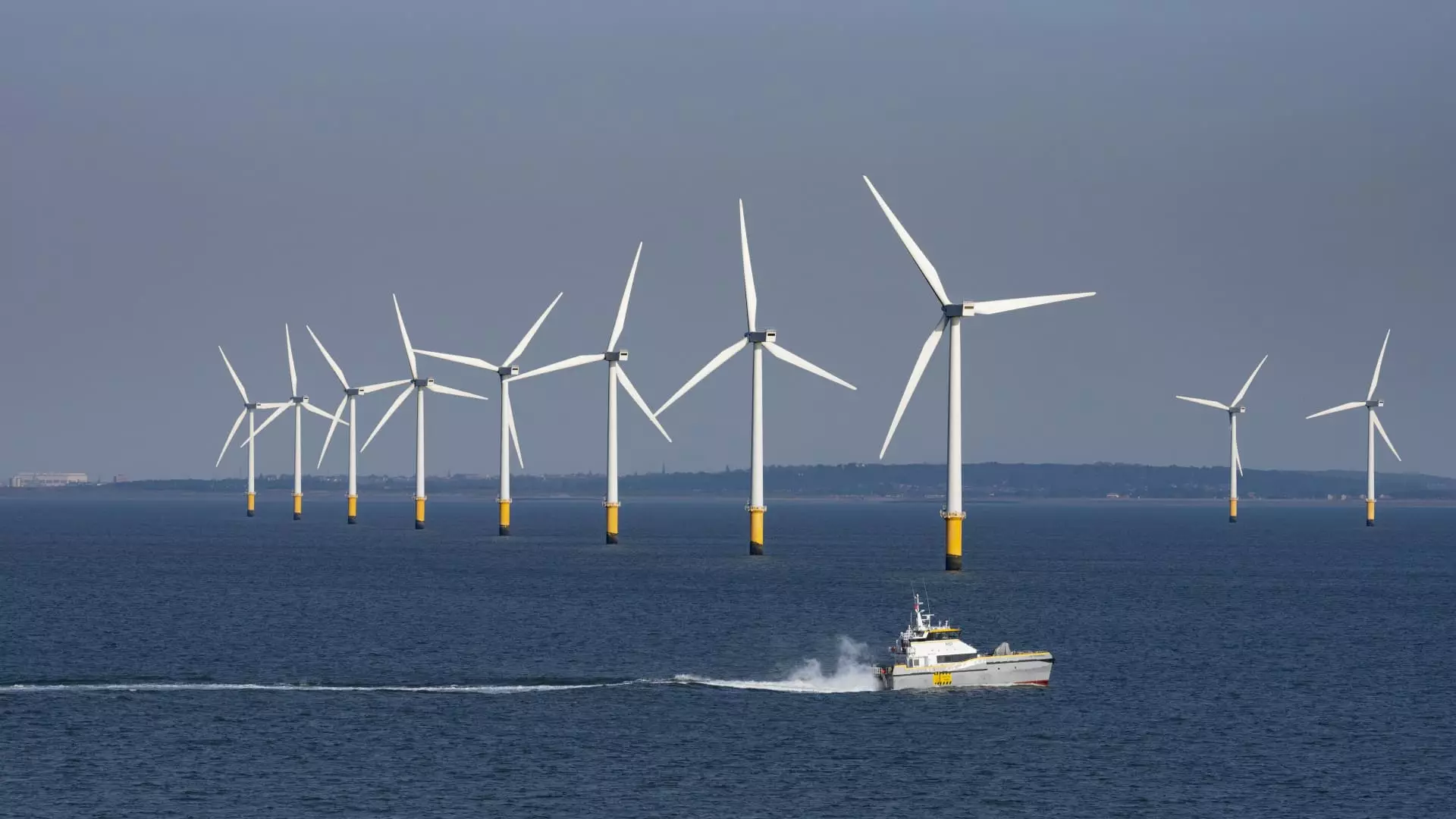In recent weeks, headlines have buzzed about the “bright future” of U.S. renewables, fueled by legislative amendments and symbolic victories. European investors, eager to capitalize on potential growth, have responded with optimism, pushing share prices of wind power companies higher. Yet, beneath this veneer of progress lies a deeper, more disillusioning truth: the U.S. renewable sector remains shackled by systemic uncertainties, political contradictions, and strategic weaknesses that threaten to undermine these seemingly positive developments.
While the amendment to the broad legislative package relaxed some restrictions—such as eliminating a tax on projects using components from “foreign entities of concern”—this is a superficial fix that masks more profound challenges. The removal of a cliff-edge deadline and the extension of project eligibility were portrayed as signs of renewed stability. But in reality, these are Band-Aids on a wound inflicted by inconsistent policy directions, protectionist rhetoric, and a lack of coherent long-term planning. The euphoria surrounding these legislative tweaks is little more than a temporary calm in a sector brimming with turbulence.
European Optimism versus American Reality
European renewable giants like Vestas, Orsted, and Nordex have benefited from growing optimism stemming from modest U.S. legislative shifts. Their concern is rooted more in hope than certainty; they acknowledge that the U.S. remains a pivotal market but also recognize its vulnerabilities. For European companies, the U.S. market has historically been a cornerstone, constituting up to half of their installed capacity in some cases. However, recent policy volatility and aggressive trade rhetoric against China—whose components dominate U.S. wind projects—cast long shadows over future prospects.
European investors are increasingly cautious. They see political signals and legislative amendments as symptomatic of a broader American indecisiveness, which could stymie growth just as quickly as it ignites it. Moreover, the notion that U.S. policy shifts will directly translate into sustained profitability is overly simplistic. In the short term, calmer headlines may boost investor sentiment, but the sector’s durability hinges on consistent, transparent policies—not on piecemeal legislative victories.
Manufacturers and Developers: Facing a Murkier Horizon
The real story, however, is not one of unmitigated progress but of strategic vulnerability. Wind power developers, able to offset funding challenges through higher power prices, enjoy a fragile advantage. Yet, the manufacturing supply chain—particularly companies like Vestas and Siemens Energy—are exposed to a far graver risk. Their substantial U.S. backlog and reliance on favorable policy climates put them at the mercy of unpredictable political whims.
The industry’s overheated optimism may lead to overinvestment and inflated expectations that are unlikely to be sustained without coherent, supportive policies. The removal of certain restrictions offers short-term relief, but it doesn’t address the core issue: the lack of a unified, predictable roadmap for renewable deployment in the U.S. until the nation commits to consistent policy frameworks, the sector remains vulnerable to sudden policy reversals and protectionist pressures.
Breaking Down the Political Myth
It’s tempting to see this legislative development as a sign of bipartisan progress, but in reality, it exposes the flawed assumptions underpinning current U.S. energy policy. The bill, meant to revitalize clean energy initiatives, paradoxically undermines larger efforts to modernize the grid and achieve substantial decarbonization goals set by progressive administrations. It reflects a political landscape rife with contradictions—professing climate ambition, yet hamstrung by protectionist instincts and short-term economic considerations.
This disconnect hampers the sector’s potential to evolve into a resilient industry capable of facing global competition, particularly from China, which continues to dominate manufacturing and technological innovation in renewables. The U.S. may momentarily pander to short-term political gains, but without strategic investments and a stable policy environment, its renewables sector risks devolving into a patchwork, inconsistent industry incapable of fulfilling its promise.
European Vigilance in a Changing Global Climate
For Europe, the U.S. presents both opportunities and risks. While European utilities and manufacturers may see potential openings, they are also acutely aware that the American market’s volatility could lead to project cancellations and capital flight. With a significant portion of their capacity tied to U.S. growth, Europeans are wary of overdependence on a fickle political environment.
Furthermore, the European experience—where political support and regulatory certainty have fostered steady growth—serves as a cautionary tale. The continent’s strategic approach has been to diversify technology deployment and geographical footprint, buffering against U.S.-style policy swings. Yet, given the immense size and influence of the American market, the temptation to lean heavily into the U.S. remains strong, even if that gamble is fraught with peril.
The Center-Left Vacuum: The Need for Rational Reform
Amidst the tumult, the path forward requires a pragmatic, center-leaning approach. Policies must strike a balance between fostering innovation, protecting national interests, and ensuring long-term sustainability. The current trajectory—marked by reactive amendments and protectionist sentiments—undermines this equilibrium.
True progress in renewables hinges on rebuilding trust in policy continuity, prioritizing decarbonization as a global shared goal rather than a political football. European investors and companies should advocate for an approach that emphasizes responsible growth, technological innovation, and strategic resilience over short-term political wins. Without this shift, the sector risks perpetuating a cycle of boom and bust, ultimately serving neither European nor American interests in creating a sustainable energy future.

Leave a Reply